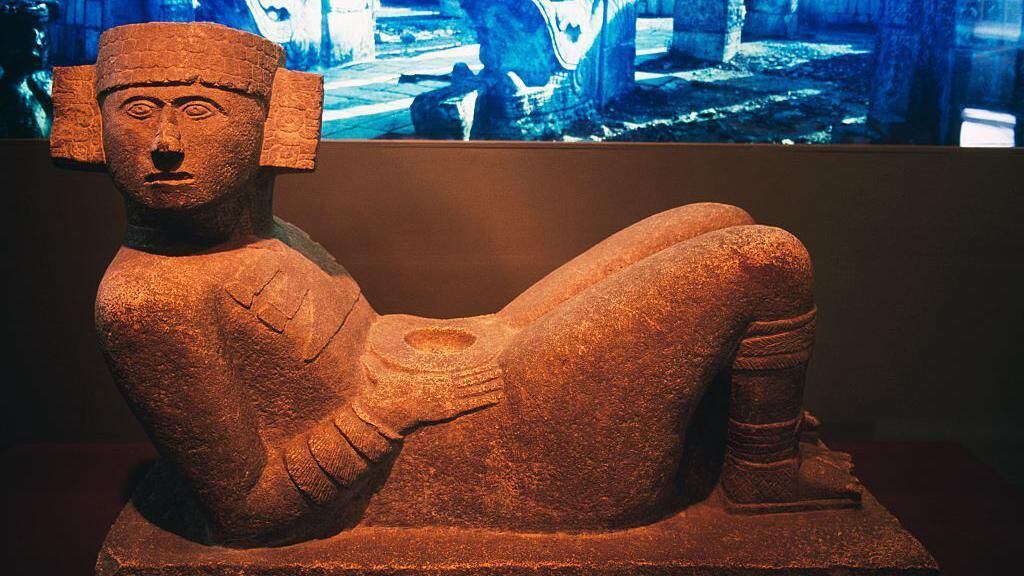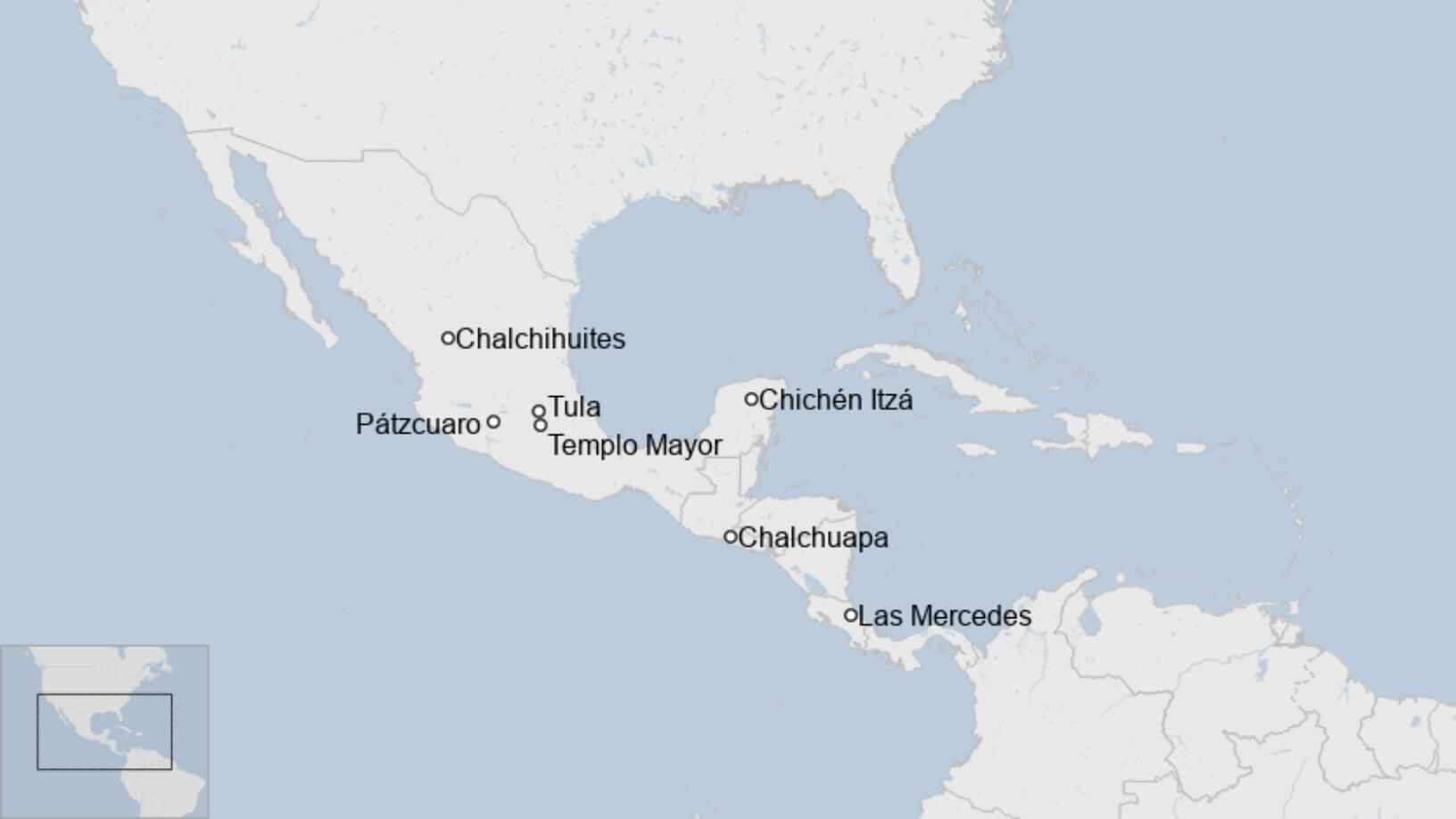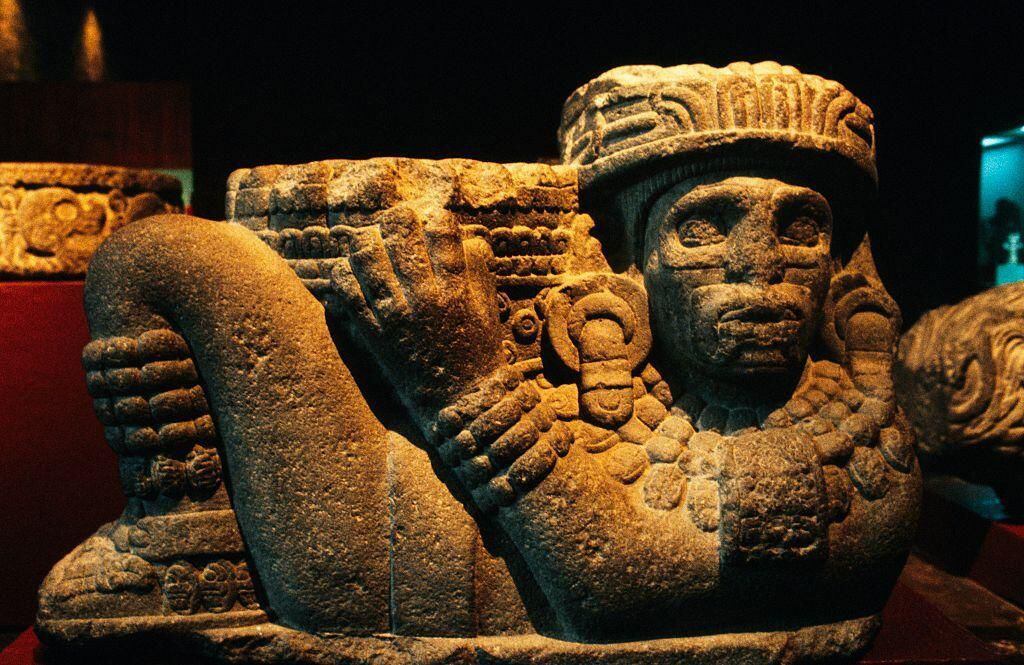Searching for evidence of his “peculiar ideas,” such as that Egyptian culture originated on the Yucatan Peninsula, explorer Augustus Le Plongeon and his wife, Alice Dixon, made a stunning discovery in southeastern Mexico. Mexico in 1875.
The French-American and his wife had been on an expedition through the jungle for two years, where they entered the ruins of the Mayan civilization. They made maps, took one of the first photographic series of the temples and documented the murals they found.
LOOK: The wooden structure from 500,000 years ago that changes what we knew about our ancestors
They also unearthed some sculptures and other objects from the ancient civilization.
Although they found no evidence for their theories about the origin of the Egyptians, one of the finds, in the city of Chichen Itzawas among the most striking: the effigy of a semi-recumbent man.
Le Plongeon named it after “chac mool”which in Mayan means “red tiger”.
Since then, discoveries of chac mool carvings have continued not only in the Mayan region but in many other places across the country. Mesoamericaa cultural region that stretches from central Mexico to Costa Rica and was the cradle of great civilizations.
For archaeologists, know Who represents this sculpture, what function did it have, what was its origin and why did it appear in so many different places? has been the reason great debate and study for decades.
“There are speculations about many things, but we don’t have scientific data,” Dr. José Luis Punzo Díaz, an archaeologist who leads a team investigating the most recent discovery of a sculpture of this type in Pátzcuaro, Michoacán (Mexico), told BBC Mundo.
“The discovery of this chac mool is the tip of the iceberg that will allow us to really understand these pieces. That’s what I find extremely exciting about this discovery,” he says, explaining that they are using technological and scientific tools that were previously unavailable.
The enigmatic figure
The Le Plongeons found and named the sculpture in 1875, but this piece – which is the best known – was only one of many that have been found dating from approximately 600 BC to beyond 1500 AD
Despite being a notable sculpture, found in relevant points of palaces and pre-Hispanic cities, the chac mool It has never been represented or explained in historical documents of the Toltecs, Mexicans, Mayans, Purépechas or other great cultures of Mesoamerica.
This led archaeologists to formulate theories about various aspects, according to researchers Alfredo López Austin and Leonardo López Luján in an extensive documentary compilation of studies of these sculptures published in the 2000s.

About origin, archaeologists say, it has been debated whether they correspond to the cultures of central Mexico, the Mayan region or northern Mesoamerica. They were also born in the classical, epiclassic or post-classic period.
Experts disagreed about its function. “If this eccentric figure was used as an offering table, as a container for hearts or as a sacrificial stone”, the experts point out. Also if the figure that represents is a sacrificial victim, a soldier, a priest, a historical figure, a “god-man”, a divine messenger or a deity.
There was even archaeological debate about appearance of the various pieces found: with the head facing left or right, the face they embody, their ornaments, the position of the abdomen, the legs and even the variety of bases they have.
“Both the form and meaning of chac mool change depending on its geographic, chronological and cultural location”, point out López Austin and López Lujan.
And the fact that it is a piece present in different cultures, with different rituals and world views, adds questions.
Chac Mool’s journey
The consensus around different studies offers some clues about chac mool.
The fact that one of the oldest pieces (between 600 and 900 AD) was documented in a region of northern Mesoamerica called Chalchihuites may be an indication of the chac mool’s “journey” over the centuries through diverse cultures and territories.
In the culture of the Toltecs, in Tula, a large number of sculptures of this type were found. This city was instrumental in influencing other dominant cultures, such as the Mexicans and the Mayans.

“These sculptures in Tula are extremely important. They are found in contexts such as palace doors or squares, not just in pyramids, something that is often thought of”, says Punzo Díaz.
“The point is that Migrations have been the driving force that explains many of these things in Mesoamerica. It seems that there are migrations from north to center and west that bring this type of sculptures”, says the archaeologist.
The Toltecs settled hundreds of miles from the Yucatán, but today they are known to have influenced the Mayans in places like Chichen Itzá, who in turn influenced the peninsula region and what is now Central America.
“Everyone associates chac mool with the Mayans, but it really is an influence that comes from central Mexico”, considers Punzo Díaz.

Another consensus is that chac mool is an intermediary character or a messenger “between the world of men and that of the gods”.
“It is a piece that was intended to place offerings”, explains the archaeologist, due to the obvious altar or flat surface (some in the shape of a container) that these figures present.
López Austin and López Lujan state that research from the last century suggested they could have been used to place offerings and sacrifices. But it is today that available technology and science can provide more certainty.
“There were hypotheses that were repeated and became truths, but there is no scientific data to be able to talk about the functions. And that is what we are investigating with a team of archaeologists, restorers, chemists, volcanologists, IT specialists. We are moving forward”, says Punzo Díaz.
And although the name chac mool arbitrarily given to it by the explorer Le Plongeon has been enshrined in scientific literature, current knowledge may also give it a new name.
“Waxanuti”, which means “he who sits in a courtyard” in the language of the Purépecha people who dominated Michoacán, is an alternative to the piece found in Pátzcuaro.
An exciting study
As has happened in many cases, the discovery of the chac mool in the city of Pátzcuaro last month was by chance, during excavations at a construction site.
It’s about the first sculpture of this type found in the context of the Purépecha culture that lived therealthough other pieces had already been found in the state of Michoacán throughout the last century.
For Punzo Díaz and his team, the condition of this piece and the discovery of presumably very ancient elements, such as coalwill allow us to obtain better conclusions about the issues surrounding these sculptures.
“The discovery of this chac mool is the tip of the iceberg that will allow us to truly understand these pieces. That’s what I find extremely exciting about this discovery”, says the archaeologist.
“Archaeology is at a very interesting moment because there are a large number of technological and scientific tools that can be applied to the study of the past. Today we can ask ourselves questions that 20 or 30 years ago were impossible to answer.”
Source: Elcomercio
I am Jack Morton and I work in 24 News Recorder. I mostly cover world news and I have also authored 24 news recorder. I find this work highly interesting and it allows me to keep up with current events happening around the world.

:quality(75)/cloudfront-us-east-1.images.arcpublishing.com/elcomercio/UXRCTC2TNNBE3FI2DYVDYUXXEE.jpg)




:quality(75)/cloudfront-us-east-1.images.arcpublishing.com/elcomercio/DQ4MLCPEJ5D5NC6BFXZJ37ENK4.png)
